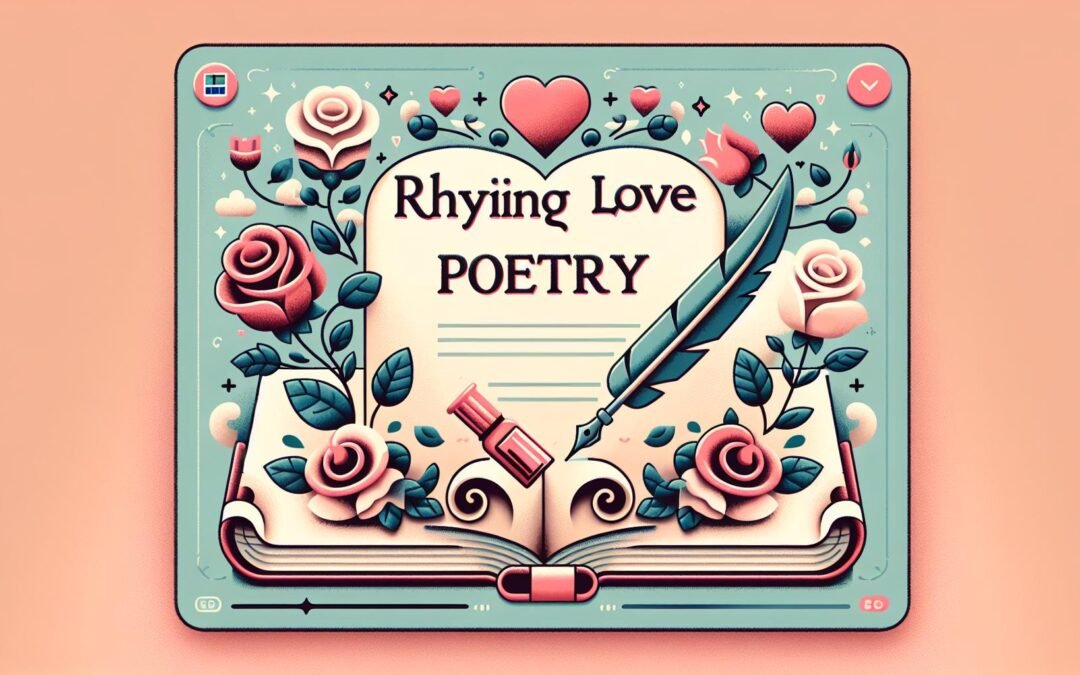Romantic poetry has survived across eras precisely because it brings together both the immediacy of feeling and the craft of language. Verses expressing adoration, longing, or heartbreak are rarely accidental; their power often derives from structure, rhythm, and, above all, rhyme. Rhyming love poetry exists at the intersection of reason and devotion, using pattern and music to deepen intimacy between the speaker and listener. Today, from classic love poetry books to modern poets’ social media posts, the enchantment of rhymed passion continues to evolve, shaped by cultural history as much as personal experience.
Rhyming Love Poetry: Meaning, History, and Enduring Appeal
Before exploring the stylistic roots and enduring value of rhyming love poetry, it is vital to understand what sets this form apart from other verse. While love poetry as a genre is as old as written language, poems employing rhyme create a separate resonance. Rhyme links lines with musical repetition, heightening both the memory of the poem and its emotional force. The best modern rhyming love poetry operates on several levels because the sound echoes help crystallize complex feelings in graceful patterns.
What Distinguishes Rhyming Love Poetry?
Rhyming poetry binds words together at their ends, crafting auditory bridges that guide a reader’s ear and expectations. When applied to declarations of love, these echoed sounds lend an incantatory quality, making feelings tangible, even physical. Whether in a Shakespearean sonnet or the spoken word pieces of contemporary poetry, rhyme works as both a constraint and a creative spark. Poets must invent fresh linguistic solutions within a tightly defined structure, so familiar language becomes charged with new significance. The expectation that a line will return, transform, or surprise through rhyme amplifies not only memorability, but also tenderness, anticipation, and sorrow.
Why Rhyme Persists in Love Poetry Books and Modern Media
Rhyme survived the free verse revolutions, not out of mere nostalgia, but because it performs emotional functions prose cannot. The constraint gently coerces the writer toward clarity and musicality. Throughout centuries, those crafting love poetry books (from John Donne to Elizabeth Barrett Browning) have chosen rhyme to amplify and organize what might otherwise become sentimentality. Modern poets also embrace rhyme: Terrance Hayes, Tracy K. Smith, and Wendy Cope, for example, use intricate patterns to surprise and seduce, proving rhyme’s relevance. Most crucially, rhyme in love poetry ensures lines lodge themselves in memory; the heart’s confessions are more likely to persevere when shaped by sound.
Origins and Evolution of Rhyming Love Poetry Across Cultures
Few literary traditions are as cosmopolitan as rhyming love poetry. Before the first sonnets or ballads, oral storytellers shaped communal memory with repeated syllables and simple refrains. Ancient Sumerian and Egyptian poems often included parallelism that functioned as proto-rhyme, emphasizing romantic or erotic longing. By the twelfth century, troubadours in Occitania wielded elaborate rhyme in their courtly songs, which exerted huge influence across Europe. Over time, these forms migrated and mutated—sonneteers in Renaissance Italy and England sculpted tightly rhymed arguments out of desire and doubt, from Petrarch to Shakespeare. Persian ghazals, a cornerstone of love poetry books from the Islamic Golden Age, developed intricate end-rhyme and refrain structures called radif, enabling mystery and devotion to intertwine.
Key Shifts and Today’s Best Practices
While forms shifted over time, the uses of rhyme evolved with them. Medieval love poetry often valorized unattainable or forbidden love, using rhyme as a mnemonic device for performance. The sixteenth-century English sonnet tradition privileged philosophical engagement with love’s contradictions, with rhyme signaling debate and reconciliation. In the nineteenth century, Elizabeth Barrett Browning and Gerard Manley Hopkins refreshed rhyme with new meters and irregularities, while Pablo Neruda’s Spanish love sonnets drew from both European and Latin American patterns.
Contemporary poetry reflects radical diversity both in form and content, but rhyme reappears in surprising guises. Carol Ann Duffy’s “Rapture” links memory, regret, and anticipation with repeated ‘ee’ and ‘oo’ sounds; Tyehimba Jess interlaces couplets with internal rhymes that echo jazz riffs and oral storytelling. Today’s poets prove rhyme can reinforce the sense of longing, distance, or fulfillment central to rhyming love poetry.
Structure and Technique in Rhyming Love Poetry
Modern poetry’s expansion of style does not render form obsolete; rather, it renews the debate over how structure and rhyme can shape meaning. Reading canonical and contemporary poetry side by side reveals a dynamic exchange between innovation and tradition. Structure is never neutral: it sculpts both feeling and interpretation.
Main Forms and Their Effects
Sonnets remain perhaps the most recognizable framework for rhyming love poetry, particularly the Petrarchan and Shakespearean variations. The former breaks into an octave and sestet, each with its own rhyme scheme, to establish question and answer, while the latter’s closing couplet often delivers radical closure or reversal. Ballads and odes allow for narrative and intensity, blending quatrains with ABAB or AABB patterns for cumulative impact. The elegy, while often associated with mourning, can commemorate lost or impossible love, utilizing rhyme to echo themes of return and loss.
In contemporary poetry, rhyme is just as likely to be internal, slant, or disguised (see the intricacies in Monica Youn’s work or the playful subversions of Wendy Cope). Whether following strict symmetry or embracing irregularity, form guides the emotional pacing and heightens the effect of the poet’s message. For more on rhyming forms and examples, Poets.org provides this substantial overview on rhyme and its various literary uses.
Devices Amplifying Emotion and Memory
Rhyme does not work alone. Modern poets use alliteration, assonance, consonance, and repetition to anchor feeling and foster intimacy. Metaphor and simile are indispensable: to call a lover’s glance “brighter than the summer dawn” or “soft as velvet dusk” transforms the ordinary into the unforgettable. When rhyme supports imagery, the sensory becomes nearly tangible.
Another key element is rhythm. Whether iambic pentameter, the ballad’s four-beat line, or even the cadence of spoken language, a metrical pattern moves the language forward, embodying breath, urgency, or repose. Great rhyming love poetry is not chained to end-words, but thrums with an interior music that sustains its emotional charge long after the poem is finished.
Contemporary Trends: Rhyming Love Poetry in the Modern World
Despite its venerable history, rhyming love poetry continues to transform: sometimes by abandoning perfection, at other times by embracing new forms of musicality. Modern poets have shown that innovation is not opposition to tradition, but another way of deepening its effects.
Reinventions and New Voices
Contemporary poetry magazines, anthologies, and digital forums teem with experiments: rap lyrics blend rhyme with rapid-fire improvisation, while Instagram poets such as Nikita Gill and Atticus employ patterned rhyme to reach a global audience. Modern poets know that rhyme can be sharp-edged or subtle, playful or tragic. In Claudia Rankine’s “Citizen,” slanted end-sounds disturb as well as soothe. In love poetry books published today, the tension between tradition and experimentation frequently produces the most vital work.
For readers seeking to immerse themselves in rhyming love poetry, anthologies like this celebrated collection from Poetry Foundation bring historical and contemporary poetry into dialogue. Whether in new writing or in revisiting the greats, rhyme becomes a way of mapping both constancy and change within the language of love.
Why Rhyming Love Poetry Endures
If the genre persists across centuries and cultures, it is because rhyme forges connections between people as well as words. In a world saturated with distraction, rhyming love poetry provides a moment of music, order, and surprise. The oldest and newest poems alike invite us into the laboratory of language, asking us to rediscover familiar feelings through unfamiliar sounds. Contemporary poetry proves that rhyme, far from being a relic of the past, remains a flexible and enduring instrument for expressing love’s infinite varieties.

